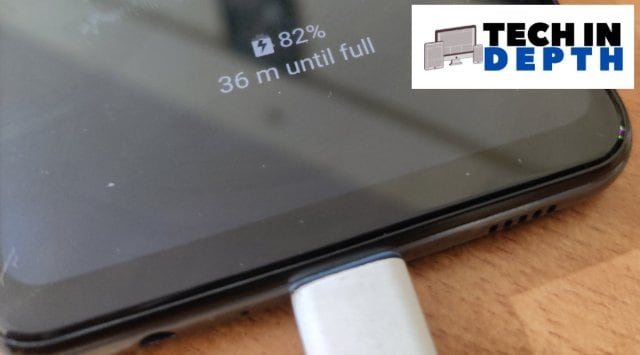Tech InDepth: Understanding USB Power Delivery
Here's all you need to know about what is USB Power Delivery and how it works.
 Here's a look at various USB PD versions and what they exactly mean. (Express Photo)
Here's a look at various USB PD versions and what they exactly mean. (Express Photo)USB Type-C ports are the dominant charging ports on most smartphones, and many laptops these days. Some smartphone brands have introduced their own version of proprietary charging (like SuperVOOC charging), and keeping track of the same can be a mess. This is where USB Power Delivery or USB PD comes in. The standard allows users to look forward to a common specification and know that a particular device can fast charge at a set of predetermined speeds.
USB PD support is likely to be mandatory in newer devices by all brands by the European Union (EU), in a move that will help make charging technologies much easier to understand. The EU has asked that while brands may continue to feature their own proprietary charging tech on phones, they must also support USB PD, which will allow users to fast-charge a particular phone using any USB PD charger, not just the brick that came with the phone.
In today’s edition of Tech InDepth, we will look at the various versions of USB Power Delivery and what charging speeds they stand for, along with how the tech actually works.
USB Power Delivery: How it works
USB PD can be configured to charge a device at up to 5A current and 240W power, which works for charging not just phones, but also more demanding devices like laptops. A device that supports USB Power Delivery is also usually safer, as the standard also supports a level of communication handshake between modern charging bricks and the devices themselves, allowing the charging voltage to change during the charging process to regulate heat. This is achieved through something called USB PD PPS (Programmable Power Supply).
You can find USB PD support across the entire Google Pixel lineup of smartphones, as well as some Samsung Galaxy S-series devices and some OnePlus smartphones. Flagship OnePlus devices, for instance, often support USB charging at up to 18W or 27W, in addition to the proprietary Warp Charging tech, which allows these phones to charge even faster with the Warp Charging bricks.
USB Power Delivery versions compared
USB PD today exists in three versions – USB PD 1.0, 2.0 and 3.0, with the last two offering more flexible power rules. Let’s start with USB PD 1.0.
USB PD 1.0 was very basic and offered six different power profiles for different device categories. USB PD 1.0 supported 10W (5V, 2A), 18W (12V, 1.5A), 36W (12V, 5A), 60W (at 12V,5A and 20V,3A) and then 100W (20V, 5A).
With USB PD 2.0 and 3.0, voltages began to remain fixed, while the amount of current to be delivered to devices could be changed to deliver optimum power. For headphones and small USB accessories, voltage locked in at 5V while current flow ranged from 0.1A to 3.0A, allowing charging speeds of up to 15W.
For smartphones, drones and cameras, voltage is locked in at 9V, while current flow supported is 1.67A to 3.0A, allowing charging speeds of up to 27W. Tablets and smaller laptops similarly support up to 45W speeds at 15V voltage, while larger displays and more powerful laptops support up to 100W speeds at 20V voltage.
USB Power Delivery 3.1 is currently in development, and will eventually support 140W, 180W and even 240W charging speeds according to the connected devices.
How fast (or slow) is USB PD charging compared to proprietary charging?
While proprietary charging technologies in phones by various brands allow the device to charge much faster at speeds of 65W, 80W or even over 100W with some devices, USB PD doesn’t support these speeds yet. Compared to Warp Charging, which functions at 10V, USB PD will work at 9V, and offer speeds of up to 27W on supported devices.
🚨 Limited Time Offer | Express Premium with ad-lite for just Rs 2/ day 👉🏽 Click here to subscribe 🚨
This clubbed with a big battery on a phone can mean over an hour of charging time, instead of the minutes of charging time offered by proprietary solutions. But then why do we need USB PD if it is so slow compared to proprietary charging?
The answer is simple. The goal of USB PD was never to offer faster charging, but a universal solution for quick charging that would work between any brand of devices and chargers. Imagine the convenience of connecting your smartphone to any charging brick that belongs to your friend or colleague, and still getting a good charging speed out of it. That is what USB PD will offer once it is available across all phones.







